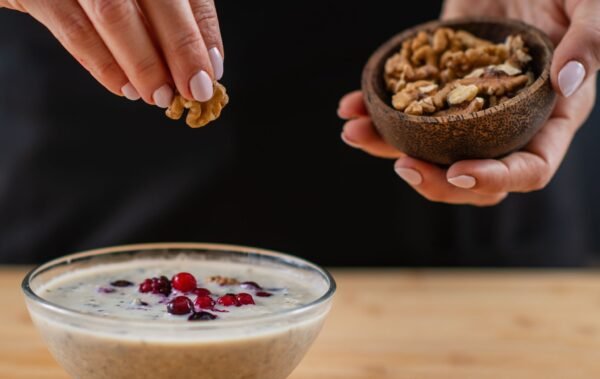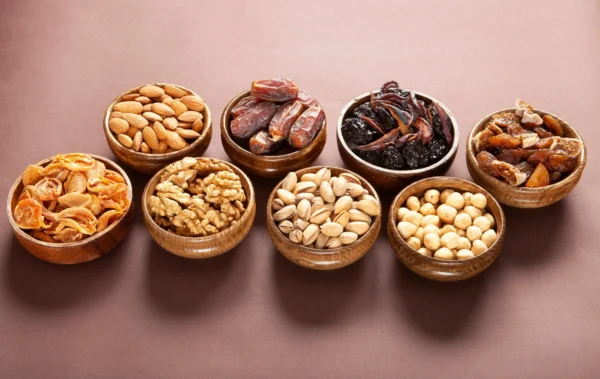No products in the cart.
Discover the Rich History of Dry Fruits in Indian Cuisine

In India, food is more than just sustenance – it’s a celebration of culture, tradition, and regional diversity. And within this vibrant culinary tapestry, dry fruits hold a place of special significance. Their journey through Indian history is as rich and flavorful as the dishes they grace.
From Ancient Trade Routes to Royal Feasts:
The presence of dry fruits in India can be traced back centuries, with evidence suggesting trade routes connecting the Indian subcontinent to the Middle East and Central Asia as early as 3000 BC. These routes brought with them exotic delicacies like raisins, figs, and apricots, which quickly found favour among Indian royalty and nobility. Dry fruits became a symbol of luxury and status, gracing royal menus and adorning festive occasions.
The Influence of Mughlai Cuisine:
The arrival of the Mughals in the 16th century further cemented the importance of dry fruits in Indian cuisine. Mughlai cuisine, known for its rich flavours and intricate preparations, heavily incorporated dry fruits like almonds, pistachios, and cashews. These ingredients added texture, sweetness, and a touch of elegance to iconic dishes like biryanis, kormas, and halwa.
A Blend of Regional Delights:
As dry fruits became more readily available, their use spread beyond royal courts and into regional cuisines. Each region in India boasts unique dishes featuring dry fruits, reflecting local flavours and traditions. In South India, cashews and raisins find their way into curries like avial and sambar. Gujarat takes pride in its delectable methi dana ladoos, while Maharashtra celebrates the festive season with delectable anjir (fig) barfi.
Beyond Flavour: The Ayurvedic Connection:
The incorporation of dry fruits in Indian cuisine goes beyond mere taste. Ayurveda, India’s ancient system of medicine, recognizes the inherent health benefits of dry fruits. Almonds are considered brain food, while raisins are believed to promote digestion. Dates are valued for their energy-boosting properties, and figs are seen as a natural remedy for constipation. This holistic food approach further reinforces dry fruits’ significance in Indian dietary traditions.
A Legacy that Endures:
Today, dry fruits remain an integral part of Indian cuisine. From gracing festive platters like Diwali’s dry fruit platters to adding a touch of luxury to everyday desserts, they continue to hold a special place in our hearts and stomachs. So, the next time you savor a piece of kaju katli or indulge in a handful of raisins, remember the rich history and cultural significance these little gems hold within the vibrant tapestry of Indian food.




